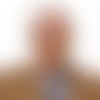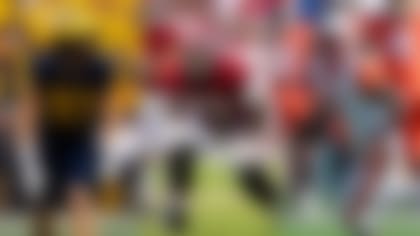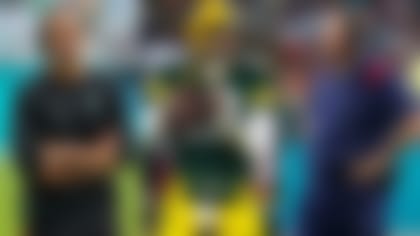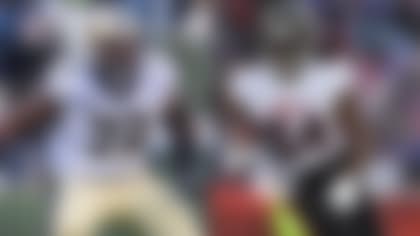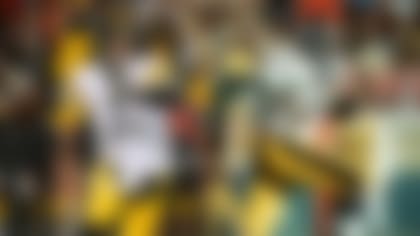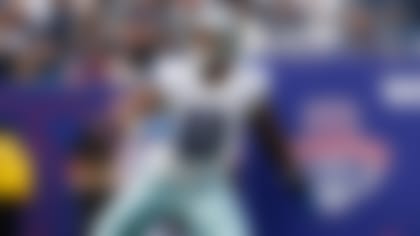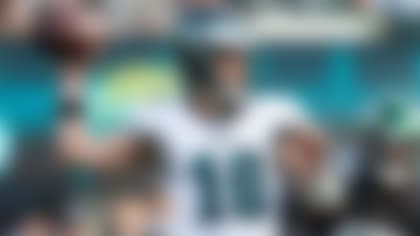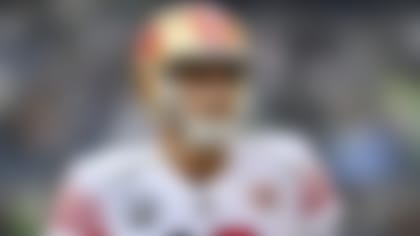As players report to training camps around the NFL, they will begin preparing for the 2021 season at glitzy facilities where everything runs like clockwork. Professional athletes, well-compensated for their skill and ability, will put long hours into maintaining their status as the best football players in the world, diligently seeking competitive advantages in an environment where plenty of resources are at their fingertips.
They will likely not be, say, splitting the cost of a $400 used car to drive on nights off, then selling it for $200 when it's time to head out of town (a pretty good deal!). No team employees will be shelling out for the last-minute installation of sod on a practice field. No one will be working out in near-freezing temperatures. And there will almost certainly be no bats flying around the hallways outside the bedrooms where the players sleep.
But that all happened in the training camps I was part of during my time working for the Dallas Cowboys.
In fact, at this time of year, I often find myself marveling at just how different training camp is today versus how it was then. So, as we get ready to indulge in the glorious return of live training camp coverage -- starting with Inside Training Camp on NFL Network on Monday and highlighted by Training Camp: Back Together Saturday, which starts at 9 a.m. ET on July 31 -- I thought I'd share some stories of a much looser time in NFL history.
One big difference: When training camps open today, the players -- who are able to dedicate their entire lives to working out and honing their craft -- are generally ready to hit the ground running. Not so in the early days of pro football, when most players had to work a non-football job during the offseason; in fact, we had players who worked at a freight depot, earning around $4 per hour handling freight. So when we began training camp, we didn't start with practice or game plans or learning football or anything like that; we started by spending the first two weeks getting these guys into shape. And that started with something called The Landry Mile.
The way The Landry Mile -- named after head coach Tom Landry -- worked was, every player had to run a mile within a time frame allotted to their position group (that is, receivers were expected to run faster than, say, offensive linemen). And if they didn't hit the target, they'd have to run a number of penalty laps the next morning at 6 a.m. I can still remember on the first morning one year, a player ran a quarter of a mile, then ran right off. "This isn't for me," he said. "I didn't come here to run track; I came here to play football."
It would be shocking for a player to do that today. But then, in those days, one didn't have to spend years preparing for a chance at a career in the NFL -- one could get in by showing up at an open tryout and expressing interest. Not that the immediate reward for participating was very lucrative. In fact, between when camp started and preseason games began, players didn't get paid at all, merely receiving room and board and a pair of shoes. Once the games started, players would get a check for $50 per week.
Another difference I'm noticing is that today, many teams are not travelling for camp. This is in part due to the reality of dealing with COVID-19, but even before the pandemic, some teams were trending away from holding camp in a separate location -- like, say, a nearby college campus -- and toward holding it at their normal practice facilities.
This was emphatically not true of my experience -- in fact, at one time, Landry and I calculated that we spent almost two years of our lives, in total, staying in dorm rooms during training camps over the years.
We also didn't just play our preseason games at NFL venues. Rather, we'd hold preseason matches in a variety of places, including lots of small towns and cities without NFL teams -- as long as there was a promoter willing to pay us to stage a game there.
Consider the travel itinerary for the Cowboys' preseason games in 1960, our first year in existence. We played games in Seattle (which did not have an NFL team yet); in Albuquerque, New Mexico; in Pendleton, Oregon; in Minneapolis (which also did not have an NFL team yet); and in Louisville.
One of my jobs at that time, in addition to scouting players, was arranging the preseason games and securing a place to hold camp. To make the western portion of our preseason schedule easier in that first year, we held the first part of camp at Pacific University in Forest Grove, Oregon.
One of the best parts of that trip was the presence of a guy by the name of James Baccelliari, better known as "Jungle Jamie." Jungle Jamie was a character -- one headline from The Pittsburgh Press in 1976 called him "King Gatecrasher," for his ability to sneak into sporting events -- who became a fixture around our training camps after ingratiating himself with Landry and general manager Tex Schramm. That year, Jungle Jamie wound up on the team charter on our trip from Portland to Seattle, where we were to play our first preseason game. Our ownership actually hired a band to play for us at the Portland airport as we left -- and I can still remember seeing Jungle Jamie marching along ahead of the band.
I came to like using colleges for camp, because they had the employees to make the place run in the summer, in terms of maintaining the facilities. This meant things were generally in good shape. And that was the case at Pacific University. The location we traveled to for the second portion of that year's camp, however ... not so much.
Earlier that year, in the spring of 1960, I wanted to find a second, Midwestern site that was closer to the games we were going to play in Minneapolis and Louisville. So I went to check out St. John's Military Academy in Delafield, Wisconsin (it's known today as St. John's Northwestern Military Academy). When I got there, the practice facilities and fields looked pretty good, but I ultimately told the colonel who was hosting me that I didn't think the Cowboys, as a first-class organization, would be able to use the place -- there were no screens on the windows, there were bats flying around the hallways, 40-watt bulbs lit every room. He assured me that we wouldn't be able to recognize the place when we came back for camp, that it would be totally remodeled.
Well.
Fast-forward to later that summer, when we're arriving in Milwaukee late on a Sunday night after flying out of Oregon. One two-hour bus ride later, we pull into St. John's -- only to find the colonel on vacation, no screens on the windows, bats flying around the hallways and 40-watt bulbs lighting every room. And this was after leaving a pretty good situation in Oregon. So the next morning, the players let me know how they felt about my choice: there, hanging from a statue outside, was a stuffed dummy with my name on it. They'd hung me in effigy.
The next year, we went to St. Olaf College in Minnesota. We liked it pretty well -- but they didn't like us so much. Or, more precisely, their athletic conference at the time, the Midwest Conference, decided member schools should not allow pro teams to use their facilities. So, it was back to the drawing board for 1962.
That year, we were again playing preseason games in the middle part of the country, so I went to check out Northern Michigan University, in Marquette, Michigan. I knew the head coach at Northern Michigan, Frosty Ferzacca, who'd coached at Marquette University in Milwaukee, where I'd grown up. Concerned that it might be too cold that far north, I asked about the weather, and he assured me that the summer was beautiful, with temperatures in the 60s and 70s every day. Well, here I was, believing everything I was told -- until we got to camp, when, at one practice, the temperature registered a frigid 36 degrees. At least I was ahead of the curve in one respect; having gone to check things out again in June, I'd discovered there wasn't a bit of grass on the practice field. So I went out and bought $86 worth of sod to make the place usable.
One other memorable thing happened at Northern Michigan. The players were always pulling some kind of prank, and that year, they set their sights on head coach Tom Landry's son, Tom Jr., who had been brought to camp by his father. After playing as part of a doubleheader in Cleveland, we got back to camp late one night -- and the players convinced Tom Jr. to go out snipe hunting. They told him they had to go out in the woods with a flashlight and something to bang on, and the snipe would come to him -- and for every snipe that was caught, he'd get $35. Of course, there is no such thing as snipe -- and when Tom Jr.'s father found out about what happened, he was, shall we say, not happy.
Though we liked Northern Michigan well enough, it was too cold and too remote. So we headed elsewhere for camp the next year, finding a place that should be plenty familiar to Cowboy fans today: Southern California.
This year, the Cowboys are holding their 42nd camp in Southern California, and their 15th camp in Oxnard. But 1963 was the first year we ventured to SoCal -- and it was all thanks to a charity game held by the Los Angeles Times, which lured us with a $100,000 payday.
We wanted to practice at a place that didn't have a lot of smog, which plagued the Los Angeles area at the time, and we were pointed to California Lutheran, a relatively new school in Thousand Oaks.
And to say it worked out well would be putting it mildly -- the franchise ended up keeping camp at Cal Lutheran until 1989, and, of course, most of the years since in Southern California.
Follow Gil Brandt on Twitter.
